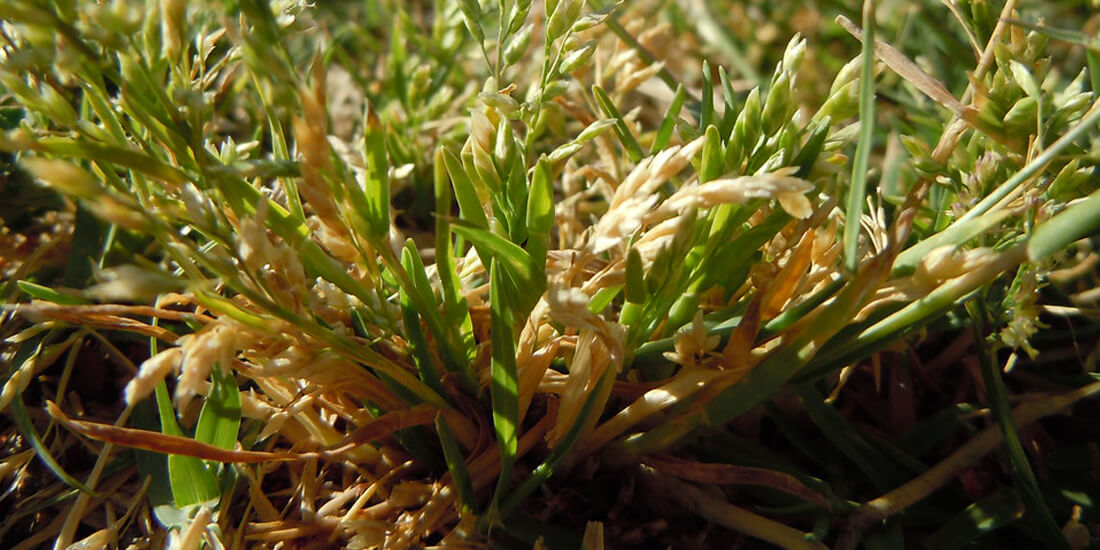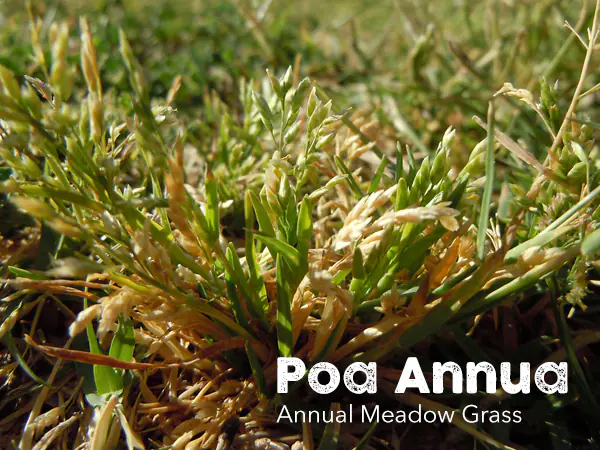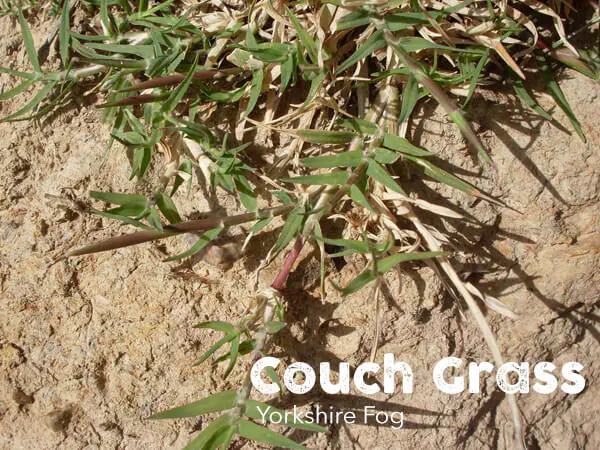Typical UK weed grasses and how to get rid of them

Weed grasses are a common pest in lawns and are a particular issue in lawns that haven’t been reseeded in a few years. At first, you may notice certain areas of your lawn sporting thicker green grass and might think you’re onto a winner, however this ‘grass’ will quickly become unaesthetically pleasing and can really ruin the look of a pristine lawn.
Fortunately, there are a few ways to spot and remove weed grasses before they become a major pain.
Why do UK weed grasses appear?
Weed grasses can be introduced to your lawn, without you knowing, in a variety of ways. These weeds are usually not the fault of the lawn owner but more of an unfortunate reality of being one!
In the UK, weed grasses can appear on your lawn after birds have dropped seeds or have been laid dormant in the soil until they have the conditions to grow. These grasses are more likely to appear in compacted, drought-stricken lawns that are also excessively mown. Conditions like this put the lawn under stress and allow the weed grasses to thrive.
What types of weed grasses are there in the UK?
The four most common types of weed grass you will come across in any UK lawn are Poa Annua (also known as Annual Meadow Grass), Couch Grass, Yorkshire Fog and Rough Stalked Meadow Grass. Treatments for removal of these are fairly similar and are covered in our ‘Control’ section below.


Why are UK weed grasses a problem?
General unsightliness isn’t the only downside to the presence of weed grasses in your lawn. Lawn mixes such as our own are often designed with different needs in mind. We have seeds that are drought-resistant, wear and tear-resistant, and some with better durability. The presence of weed grasses can disrupt the balance in your lawn and leave areas more susceptible to the above problems.
The actual spread of weed grasses is the biggest issue, as their roots can become entangled in shrubs and bushes. This makes them difficult to remove and allows them to hop from garden to garden without much difficulty.
Preventing weed grasses
As with most lawn-related problems, preventing it is much easier than trying to remove it. A healthy lawn is a great barrier to weed grasses as thick, well-established grassroots can help prevent their spread. Maintaining a healthy lawn with regular practices such as scarifying, aerating and most importantly, feeding can really improve grass root strength. This can also help the lawn fight off all types of weeds, not just unwanted grasses.
Re-seeding is also an important practice in lawns. It is not unusual for some grass to die in flooding or drought conditions, but this does open pockets for weed grasses to grow in. By reseeding, you can ensure that most of your lawn is made up of grass, not grass and a layer of thatch.
Lots of UK lawns contain species such as perennial ryegrass and fescue, which are considerably long-lasting grasses - but overseeding every few years can really help the composition of your lawn and make sure no alien species sneak into your lawn undetected.
Controlling weed grasses
Step 1
If your weed grasses appear in clumps, you should use a blade to cut vertically at the roots. Remove the clumps, prepare the soil from scratch and replace it with seed.
Step 2
In almost all cases, step one will work for homeowners. However, if the digging out and reseeding method fails, and the weed grasses spread, then this leaves the option of a Feed, Weed and Moss Killer.
Like with lots of weeds, a glyphosate solution (Roundup) can be applied to the area to kill off weed grasses, bare in mind this will also kill off your grass - so only choose this method if you are willing to start your lawn from scratch again.
The main thing to remember with any weed grass is that it’s important to identify, prevent, and control infestations as quickly and effectively as possible to stop them from becoming a more prominent addition to your garden.
If weed grasses have overtaken your lawn, it is better to consider removing the turf entirely and starting from scratch.
Removing weed grasses
Removing the weeds can be a little time-consuming, depending on your approach. Find out more about how to remove weeds from your lawn.
If your lawn is also suffering from moss, then we also have a guide with helpful tips to remove that - thankfully, removing moss is a bit easier!